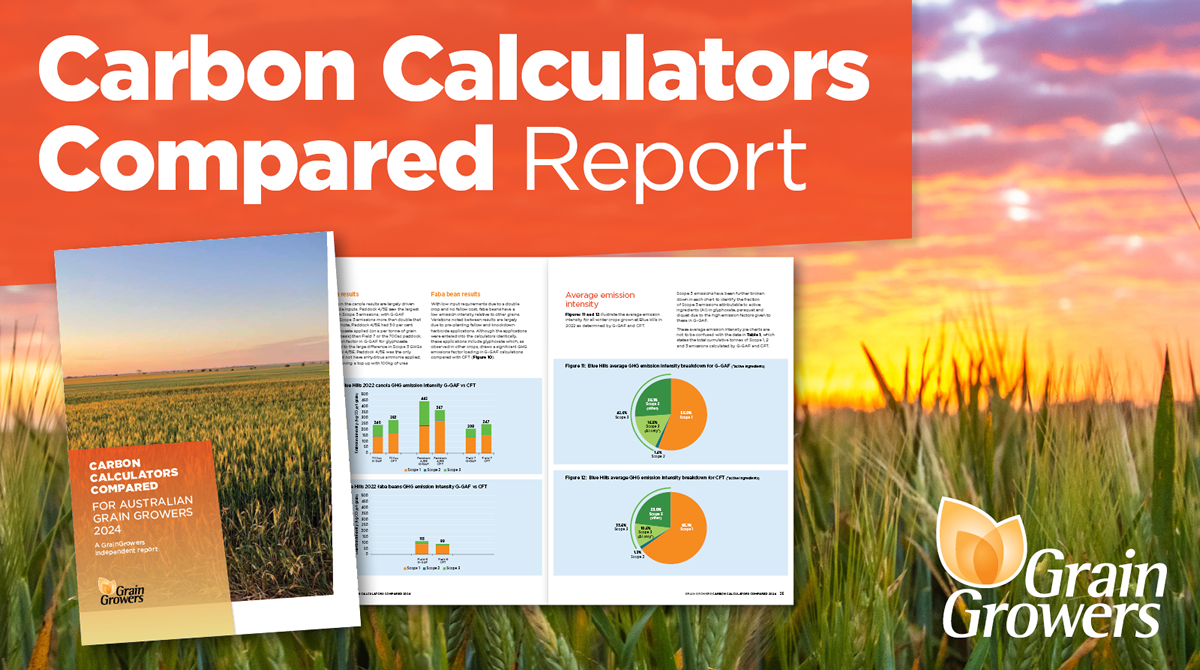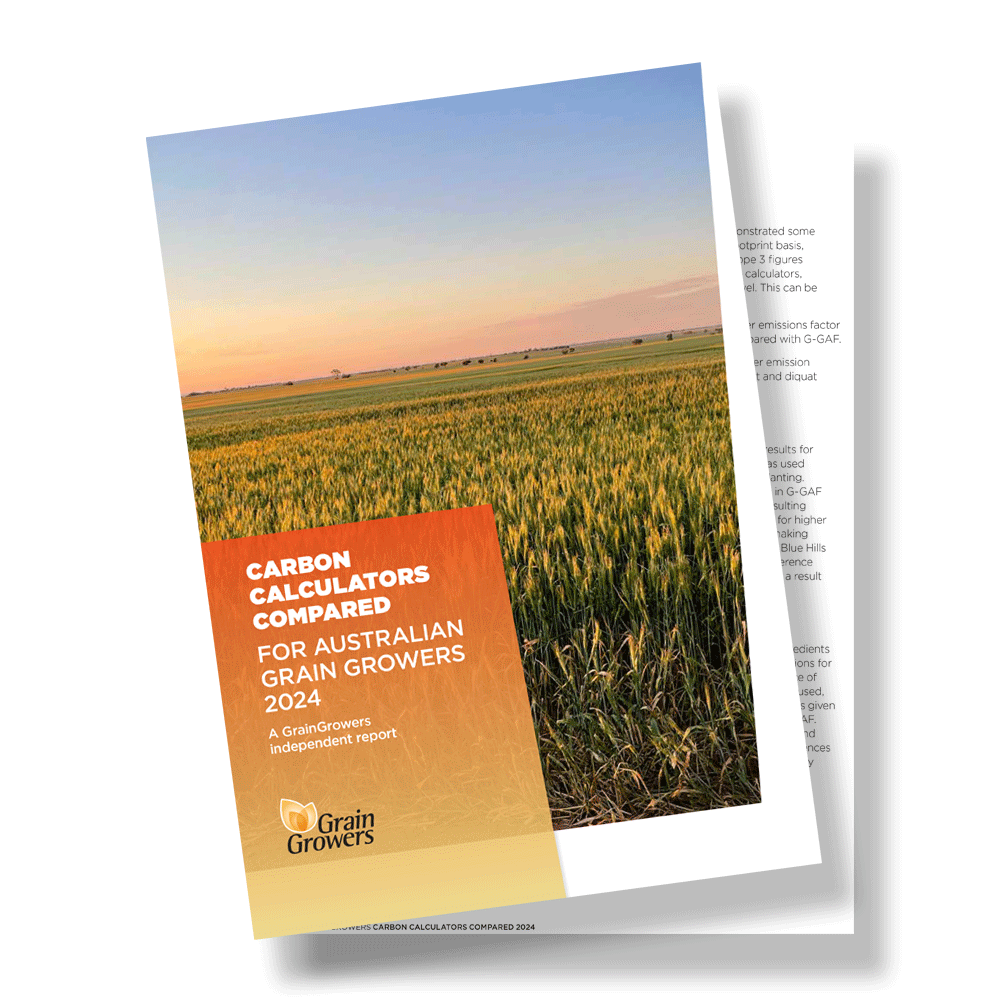Carbon Calculators Compared Report


Carbon Calculators Compared Report
The measurement of greenhouse gases (GHGs) has rapidly taken centre stage in agriculture, emphasising the importance of carbon literacy in contemporary grain production.
This report stands as an independent assessment of two carbon calculators currently available to Australian grain growers:
- The Grains Greenhouse Gas Accounting Framework (G-GAF) V10.9; and
- The Cool Farm Tool (CFT) V2.10.0.
It is important to note that other calculators and tools are currently under development. GrainGrowers aims to assess these as they become available.
Your questions answered
- Why use a carbon calculator?
- What are the benefits of knowing my baseline GHG emissions and their sources?
- What can I do with the numbers of my baseline GHG emissions and their sources?
- What are the data inputs from my farm that are required for each calculator?

From the Report

Why use a Carbon Calculator?
There are three main reasons why growers may choose to use a carbon calculator for their business. This can be summarised as the 3 Rs: Realise, Report and Reduce.

Comparison case studies
Two calculators, the Grains Greenhouse Gas Accounting Framework (G-GAF) and the Cool Farm Tool (CFT) have been evaluated in this report using identical winter 2022 cropping cycle data from two Australian grain growers.

Jargon buster
Before calculating the greenhouse gas (GHG) emissions from growing grain, it is essential to understand the commonly used terminology related to GHGs.

Running your own numbers
Growers will already have most of the figures required to measure the carbon footprint of a crop, particularly if they use software packages

Carbon and Cropping Report
For more information, please see GrainGrowers’ Carbon and Cropping Report, released in 2022. It includes useful explanations about soil carbon and farming practices, an overview of the carbon market and more.
Grain Sustainability Framework
Launched in 2019, the Australian Grain Sustainability Framework (GSF), is intended to serve as an instrument for strengthening the sustainability of the Australian grains industry.
